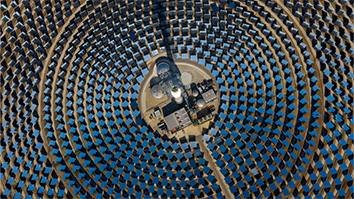Imagine a pile of a bright white powder weighing about 120 kg—if you’re an average-sized, healthy adult, that powder represents the total amount of a fuel molecule called ATP that you use every day for routine activity; indeed, for life itself.
Recent work in SRI’s Cancer Biology Program indicates that an enzyme that regulates ATP—the cell’s fuel sensor—could hold a key to suppressing some aggressive tumors.
How does ATP work?

To maintain the vital balance between ATP generation and ATP consumption, all eukaryotic (nucleated) cells contain a fuel sensor called AMPK (AMP-activated protein kinase ).
Much like a tiny robot, AMPK has specific parts (subunits) that enable it to automatically respond to the depletion of cellular ATP caused by excessive energy consumption; for example, by an energy stress such as cell division. These subunits include a sensor for ATP, ADP, and AMP (the gamma subunit); an effector for protein kinase activity (the alpha subunit); and a “scaffold” that holds the subunits together as a functional AMPK molecule (the beta subunit).
When the gamma subunit detects an energy stress – an increase in the amount of ADP to ATP (or AMP to ATP) – it signals this information to the alpha subunit, which increases the protein kinase activity of AMPK. AMPK then phosphorylates many different cellular proteins, changing their activity and ultimately altering the energy metabolism of the cell.
In general, activated AMPK reprograms a cell to consume less ATP for nonessential needs while generating more ATP to compensate for excessive consumption—AMPK thus acts to restore the energy balance of a stressed cell by monitoring and conserving cellular ATP content.
What role might a powerful metabolic regulator like AMPK have in human cancer?
Our suspicion was that if AMPK can reprogram cancer cells to increase or decrease ATP consumption, then we might be able to regulate the growth of a tumor. To test this idea, we created tumor cells that are defective in AMPK activity, and tested their ability to form experimental tumors.
We found that the growth of aggressive tumors was strongly suppressed—suggesting that AMPK protects tumor cells as they cope with the severe energy stresses inherent in rapid tumor growth.
Our findings also suggest that if it is possible to safely inhibit AMPK, then maybe an AMPK inhibitor could be used as a novel form of targeted drug therapy for certain human cancers. Alternatively, maybe hyperactivation of AMPK with a drug could have an antitumor effect… stay tuned.
Keith Laderoute is director of SRI’s Cancer Biology Program in the Center for Cancer and Metabolism.


